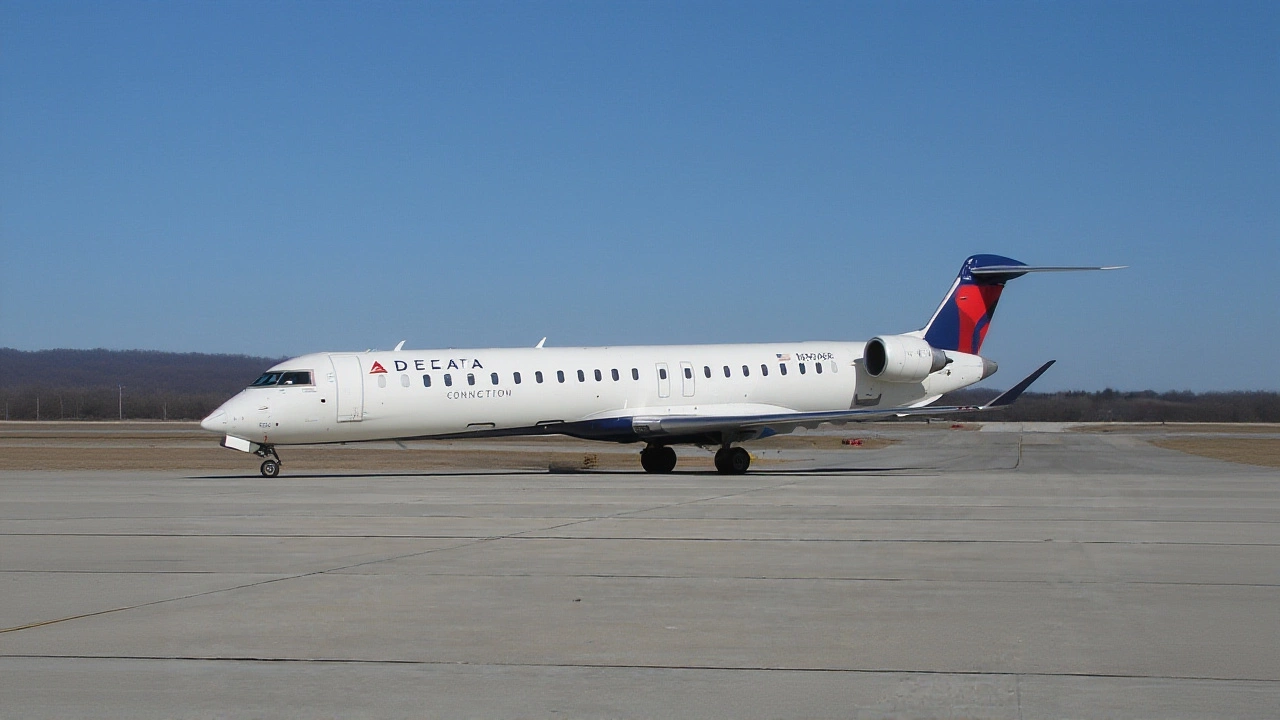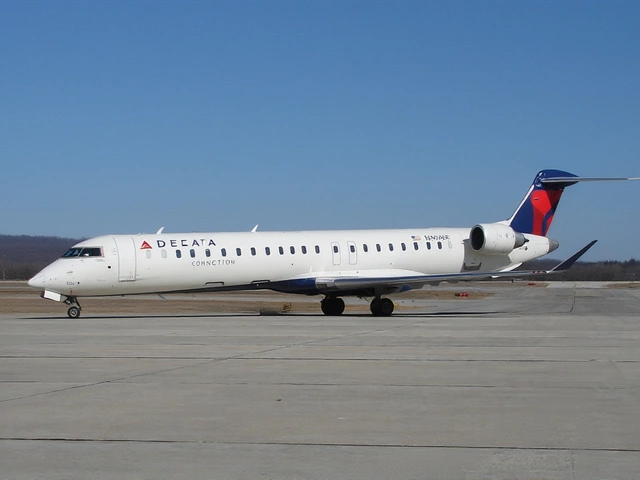Delta Regional Jets Collide on LaGuardia Taxiway, Passengers Speak Out

When Delta Air Lines’s two regional jets brushed against each other on a LaGuardia Taxiway Tuesday night, commuters suddenly found themselves part of a headline‑making incident.
The low‑speed impact occurred at roughly 6:45 p.m. on October 1, 2025, as the aircraft were taxiing between gates and the runway at LaGuardia Airport (LGA). Passengers on board both planes described a sudden jolt, a screech of brakes, and a brief moment of panic before the crews brought the jets to a stop.
What happened on the tarmac?
The collision involved two Embraer 175‑type regional jets, the workhorses of Delta’s short‑haul network. According to the airport’s ground‑control logs, Jet A, flight DL‑4622 bound for Boston, was instructed to turn onto Taxiway B after gate C21. At the same time, Jet B, flight DL‑6879 heading to Atlanta, was cleared to cross the same taxiway from the opposite direction.
“The two aircraft arrived at the intersection within a few seconds of each other,” said an unnamed air‑traffic controller who briefed the media. “Because of a brief miscommunication, both crews applied brakes at the last second—hence the low‑speed scrape rather than a high‑impact crash.”
Both jets remained largely intact; no structural damage beyond minor winglet dents was reported, and medical teams confirmed no serious injuries. A handful of passengers reported bruises and a sore neck, typical of a sudden jolt, but everyone was quickly cleared to de‑board.
Why ground incidents matter
Ground collisions are rare, yet the Federal Aviation Administration (FAA) records an average of 1,200 minor taxiway incidents each year across the United States—roughly one every eight hours. Of those, only about 5 % involve commercial jets, and even fewer result in passenger injury.
What makes the LaGuardia event noteworthy is the timing. October 1 fell during the post‑summer travel surge, with passenger traffic at LGA up 12 % compared to the same week in 2024. The airport, already operating near capacity, handles over 30 million enplanements annually, making precise ground‑movement coordination essential.
Moreover, the aircraft involved were part of Delta’s regional fleet, which in 2024 accounted for 38 % of the airline’s domestic seats. A mishap with two such jets can ripple through flight schedules, especially on tight connection windows.
Official responses and investigation
Within an hour of the incident, Federal Aviation Administration dispatched a team of investigators to the scene. The FAA’s Office of Aviation Safety will work alongside the National Transportation Safety Board (NTSB), which has opened a preliminary inquiry under Accident Investigation Regulation 49.
“Our immediate priority is passenger safety and ensuring that the aircraft are cleared for further service,” said Maria Thompson, Vice President of Communications at Delta Air Lines. “We are cooperating fully with the FAA and NTSB, and we’ll share the findings as soon as they are available.”
The investigation will focus on three key factors:
- Radio communication logs between the pilots and ground control.
- Taxiway signage and lighting conditions at the time of the incident.
- Potential procedural gaps in Delta’s ground‑movement briefings.
Preliminary data shows the weather was clear, with visibility at 10 miles and no precipitation—conditions that typically aid safe taxiing.
Passenger accounts and social media buzz
Within minutes, videos of the moment surfaced on TikTok and X (formerly Twitter). One passenger, identified only as “Alex” (or a pseudonym for privacy), captured the instant the jets made contact: a brief screech, followed by a tight‑knit cabin shaking.
“I thought we were about to take off because the sound was so sudden,” Alex wrote in a caption that quickly amassed 12 k likes. “Luckily, the pilots kept their cool and we were back on the terminal in about ten minutes.”
Another traveler, a frequent flyer on the Boston‑bound leg, posted a longer thread describing how cabin crew reassured passengers, checked seat belts, and later offered complimentary vouchers for the inconvenience.
Delta’s official social‑media account responded with a brief statement: “We are investigating the incident with the FAA and will keep our customers informed.” The brevity sparked a flood of questions from concerned travelers, prompting the airline to set up a dedicated hotline for affected passengers.
Looking ahead: safety measures for busy airports
Industry experts say the LaGuardia collision underscores the need for enhanced ground‑movement technology. Some airports are already piloting “Surface Movement Radar” upgrades that provide controllers with real‑time 3‑D tracking of every aircraft on the tarmac.
“If you can see every taxiing aircraft in a digital overlay, you reduce the reliance on voice communication alone,” explained Dr. Elaine Park, an aviation safety analyst at the University of Texas. “That’s the direction the FAA is headed, especially for high‑traffic hubs like LGA.”
Delta has announced plans to review its own ground‑crew training protocols, emphasizing simulation‑based scenarios that mimic dense traffic conditions. The airline also hinted at a possible rollout of “digital push‑to‑talk” systems that could streamline clearance messages.
For now, passengers can expect a short delay on the two affected flights—DL‑4622 is now slated to depart at 8:32 p.m. instead of the original 7:55 p.m., while DL‑6879 will leave at 9:10 p.m.
As investigations continue, the incident serves as a reminder that even low‑speed taxiway mishaps can capture public attention, spark policy debates, and drive technological upgrades throughout the aviation sector.
Key Facts
- Date & Time: October 1, 2025, 6:45 p.m. EDT
- Location: Delta regional jet ground collisionLaGuardia Airport
- Aircraft: Two Embraer 175 regional jets (Delta flight DL‑4622 and DL‑6879)
- Casualties: No serious injuries; minor bruising reported
- Investigators: FAA and NTSB conducting joint inquiry
Frequently Asked Questions
How many passengers were on the aircraft during the collision?
A total of 132 passengers were aboard the two jets combined—78 on the Boston‑bound flight and 54 on the Atlanta‑bound flight. All were safely de‑boarded after the incident.
What caused the two jets to collide?
Preliminary reports point to a brief miscommunication between the pilots and ground control, leading both aircraft to enter the same taxiway intersection almost simultaneously. The FAA will confirm the exact sequence after reviewing audio recordings.
Will this incident affect Delta’s schedule at LaGuardia?
Delta has already adjusted the departure times for the two affected flights—DL‑4622 now departs at 8:32 p.m. and DL‑6879 at 9:10 p.m. Other flights remain on schedule, though occasional ripple delays may occur as crews re‑allocate resources.
What steps are being taken to prevent future ground collisions?
Both the FAA and Delta are reviewing taxi‑way signage, crew briefing procedures, and the potential rollout of advanced surface‑movement radar at busy hubs. Experts also recommend digital push‑to‑talk communication tools to reduce reliance on verbal clearances.
How can passengers get compensation for the delay?
Delta has offered affected travelers complimentary travel vouchers worth up to $150, plus a waived change‑fee for rebooking. Passengers can claim the vouchers through Delta’s customer‑service portal using the incident reference code LGA‑2025‑01.
